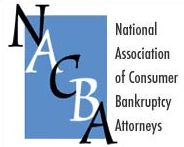With persistence and determination, Ohio NACBA members were successful in persuading the republican controlled, Ohio legislature to raise the homestead exemption by over $100,000,00. Since then, trustees in Ohio have battled against the debtor’s use of the new exemption. The case of In re Depascale, No. 13-40768 (Bankr. N.D. Ohio Aug. 8, 2013), was one such battle. There, the court addressed the issue of whether Substitute House Bill No. 479 (HB 479) (eff. March 27, 2013), which raised Ohio’s homestead exemption from approximately $23,000.00 to $132,900.00, applies to a debtor whose bankruptcy petition was filed after the amendment took effect but whose debt was incurred prior to the effective date. The issue came before the court on the debtor’s motion to avoid two judicial liens pursuant to section 522(f)(1)(A) on the basis that they impaired his homestead exemption. One of the lienholders, Landmark, objected to the avoidance arguing that the debtor was entitled only to a $23,000.00 homestead exemption because that was the statutory exemption amount in effect under Ohio Revised Code§ 2329.66 at the time it filed its lien. Under this earlier exemption amount, the lien would be only partially avoidable. The issue turned on whether the lien impaired the debtor’s exemption under section 522(f)(1)(A) and, therefore, required a finding as to the amount of the exemption.
The court began its analysis noting that, like the previous legislation to amend O.R. C. § 2329.66, HB 479 changed only the exemption amount. The court then looked at how the issue was treated under the previous amendments, finding that courts uniformly applied the exemption amount as of the petition date. See, e.g., Simon v. Citimortgage, Inc. (In re Doubov), 423 B.R. 505, 514 (Bankr. N.D. Ohio 2010) (“The homestead exemption is determined as of the date on which the debtors filed their petition.”); In re Jaber, 406 B.R. 756, 762 (Bankr. N.D. Ohio 2009); In re Pier, 310 B.R. 347, 354 (Bankr. N.D. Ohio 2004) (“[T]he terms of § 522 provide that the petition date establishes whether a debtor is entitled to an exemption[.]”); In re Lude, 291 B.R. 109, 110 (Bankr. S.D. Ohio 2003). Pursuant to well-established rules of statutory construction, the Ohio legislature, operating against this historic treatment of exemption amendments, may be presumed to have intended the same treatment.
This finding harmonizes both federal and state law in that section 522 explicitly provides that property exemptions for opt-out states are determined by the state law applicable “on the date of the filing of the petition,” 11 U.S.C. § 522(b)(3)(A), and O.R.C. § 2329.66(D)(1) likewise states that a debtor’s interest in property is determined as of the date a petition is filed with the bankruptcy court.
The court was not persuaded by the creditor’s reference to legislative language accompanying HB 479 that: “The amendments made by this act to sections 2329.66 and 2329.661 of the Revised Code shall apply to claims accruing on or after the effective date of this act. . . . This act is not intended to impair any secured or unsecured creditors’ claims that accrue prior to the effective date of this act.” The court found this language was contradicted by the express language of the Ohio exemption statute, and was, in any case, “internally nonsensical and unworkable.” Please work with you State Chair if you’d like to pursue homestead exemption increases in your state.
Courtesy of the National Association of Consumer Bankruptcy Attorneys.
Visit our website at www.Hoorfarlaw.com

